March 26, 2024
Fresno School District Takes Its Instructional Technology from Dated to Dazzling
These are the interactive technologies that Fresno Unified schools are using to unlock collaborative learning.
In some of today’s innovative K–12 classrooms, you won’t find teachers exclusively sitting or standing in front of the room while students sit in rows and listen passively. That traditional lecture style, a relic from the turn of the last century, was intended to prepare students to work in factories.
At Fresno Unified School District, school leaders are modernizing classrooms to prepare students for a technology-dependent future and help them develop essential 21st century skills such as creativity, critical thinking, collaboration and digital literacy.
New digital whiteboards from Promethean are key to this effort and are being placed in every Fresno Unified classroom to provide students with a more engaging, interactive experience.
High school students use the displays to wirelessly share their laptop screens so they can collaborate on small-group projects or show their work to the entire class. Elementary school students use educational apps and games to write, draw or drag-and-drop items on the display.
Some teachers can save their screens or record their lessons and post them online so students can review class sessions later. Others use the whiteboards to take students on virtual field trips.
A Call for Interaction and Collaboration
The new digital touch-screen displays are an essential part of the district’s eight-year Personalized Learning Initiative to improve classroom instruction and use technology to facilitate a more personalized, blended-learning approach. This includes small-group and whole-class instruction, independent online learning and collaborative project work.
Two years ago, Fresno Unified — California’s third-largest school district, with 74,000 students — started the process to upgrade its desperately dated audiovisual equipment. Most of its 4,000 classrooms had either antiquated projectors or nearly 20-year-old interactive whiteboards that were being used as glorified projectors.
Teachers increasingly wanted state-of-the-art display technology to foster more classroom collaboration, says Don Soyinthisane, the district’s executive director of IT. “They kept asking, ‘Is there something you have that’s interactive?’”
In response, Fresno Unified’s IT department purchased Promethean ActivPanel digital whiteboards for every classroom. Teachers use the ActivPanels to reimagine education, liven up their classes with multimedia activities and improve student engagement through active learning.
“Teachers are seeing more interaction and in-class collaboration. Students pay more attention,” Soyinthisane says. “Our kindergarten students and first graders all want to come to the board, so they raise their hands and go up there to play educational games.”
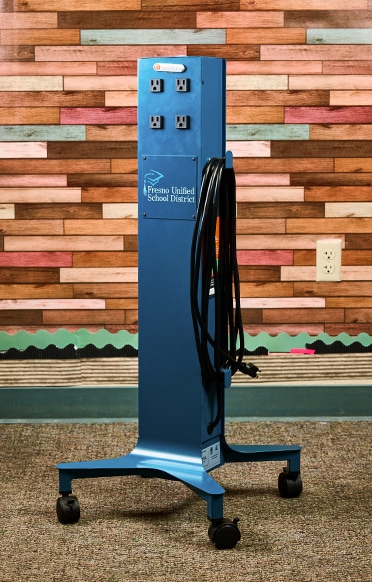
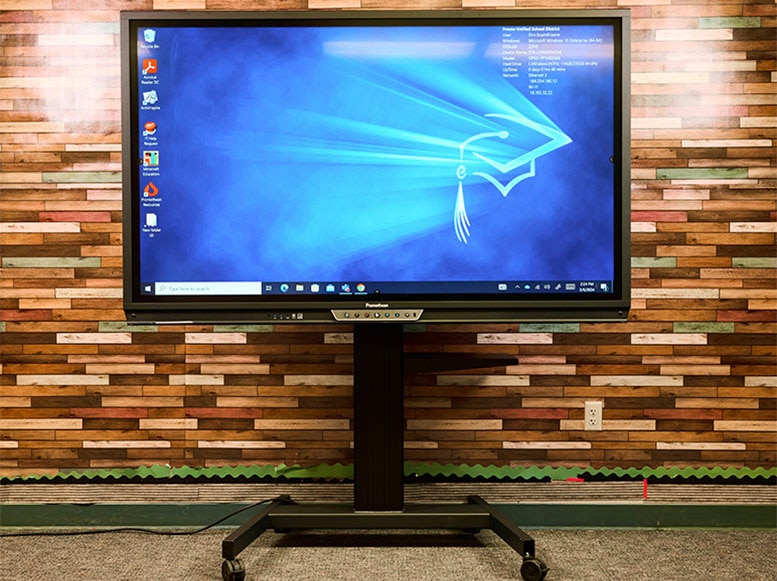
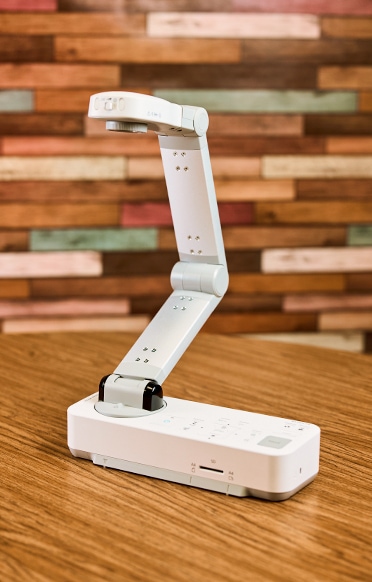
Bringing Credibility to the Modern K–12 Classroom
To remake classrooms for the digital age, many districts have installed Wi-Fi and equipped students with mobile devices. They are also investing in audiovisual equipment, such as digital whiteboards and projectors; casting tools that enable students and teachers to wirelessly share their screens; audio solutions, such as wireless microphones, to amplify teachers’ voices; and speakers to evenly distribute sound, says Ted Bartnik, CDW’s classroom modernization specialist.
Classroom modernization also includes flexible furniture. Mobile podiums and movable desks and chairs allow teachers and students to quickly reconfigure rooms for different instructional needs, he says.
“Students are so used to technology that they expect a technology-rich learning environment,” Bartnik says. “It gives your classroom credibility.”
However, creating a state-of-the-art classroom doesn’t happen overnight. As Fresno Unified discovered, it requires an experienced partner like CDW, whose expertise can help IT leaders choose the right technology for their needs. Likewise, CDW’s vast resources and industry connections help districts manage projects, install technology and ensure teachers get the professional development they need to maximize the technology’s benefits.
Convenient Features Add to Promethean’s Appeal in the Classroom
One of the benefits of the new digital whiteboards is that IT staff can use remote management tools to centrally manage, monitor and secure the displays.
For Promethean interactive displays, tech teams can use Radix management software to remotely install apps and update firmware. They can also set policies that, for example, limit access to certain types of apps and websites. To save on energy costs, they can schedule the devices to turn on in the morning and turn off when school ends in the afternoon, says Ted Bartnik, CDW’s classroom modernization specialist.
In addition, with digital signage software, districts can use interactive whiteboards to broadcast emergency notifications and other messages, he says.
Redesigning the Classroom Goes Beyond Simply Buying Digital Displays
Previously, Fresno Unified equipped its students with Windows laptops and installed strong Wi-Fi in its 100 schools. When Soyinthisane started shopping for interactive whiteboards, he also added Epson DC-13 document cameras (because they were popular with teachers) and Bretford charging stations (because students often forget to charge their laptops before school).
Soyinthisane has been purchasing technology from CDW for more than a decade, so he trusts the company. He attends national educational conferences and is well versed in the latest ed tech trends, but when he’s making big purchases, he turns to CDW Executive Account Manager Ryan Miller for guidance and assistance.
“We are just one customer to a manufacturer, but we know CDW always has our back,” Soyinthisane says. “If we have an issue with a manufacturer, we reach out to CDW, and they are always willing to help us resolve it.”
The CDW team also educates Soyinthisane about the merits of different solutions. He learned that interactive whiteboards have come a long way since their debut in the early 1990s.
The displays are bigger, and the latest interactive panels support 4K resolution. The screens are bright and sharp, allowing students to see the boards clearly in daylight or with the lights on. That’s a stark contrast to Fresno Unified’s older projectors.
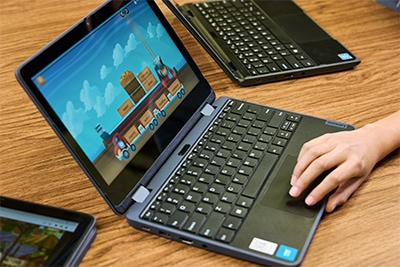
Furthermore, Soyinthisane learned that there’s more to a buying decision than the display itself. CDW walked him through the benefits of buying displays with onboard computers, the pros and cons of mounting the displays on walls (versus using mobile carts) and the professional development resources available from each vendor.
After considering its options, Fresno Unified standardized on 75-inch Promethean ActivPanel interactive displays and bought Conen height-adjustable mobile carts to give teachers more flexibility in how they lay out their classrooms.
The district also bought onboard Windows PCs to go with each display. They are optional because the Promethean displays already come with the Android operating system installed. But Fresno Unified’s teachers are comfortable with the Windows OS. The computer allows teachers to access educational content and apps without having to connect their own laptops, freeing them to use their laptops as a secondary device in the classroom, Bartnik says.
With help from CDW, Fresno Unified also gained full-time Promethean staff to train teachers for two years.
“Don came to CDW with a vision, vetted five vendors, and Promethean rose to the top,” Miller says. “He liked that they have a lot of educational materials, including online curriculum tools.”
Fresno Unified took a phased approach to implementing the displays, beginning with a 2021 pilot that included 25 teachers. When that group raved about the technology, the district expanded the pilot to 300 teachers in spring 2022, providing at least two displays in each school.
“The response was amazing,” Soyinthisane says. “Teachers loved it. The most common feedback we got was that students were more engaged.”
That prompted the remaining teachers and even school principals to ask for more, so district leaders got approval from the school board to buy the device for every classroom. “We let this grow organically and built momentum,” he says.
62.5%
The percentage of school IT leaders polled online who say their top goal with ESSER technology purchases is to enhance student engagement
Source: EdTech: Focus on K–12 online poll, April 24, 2023
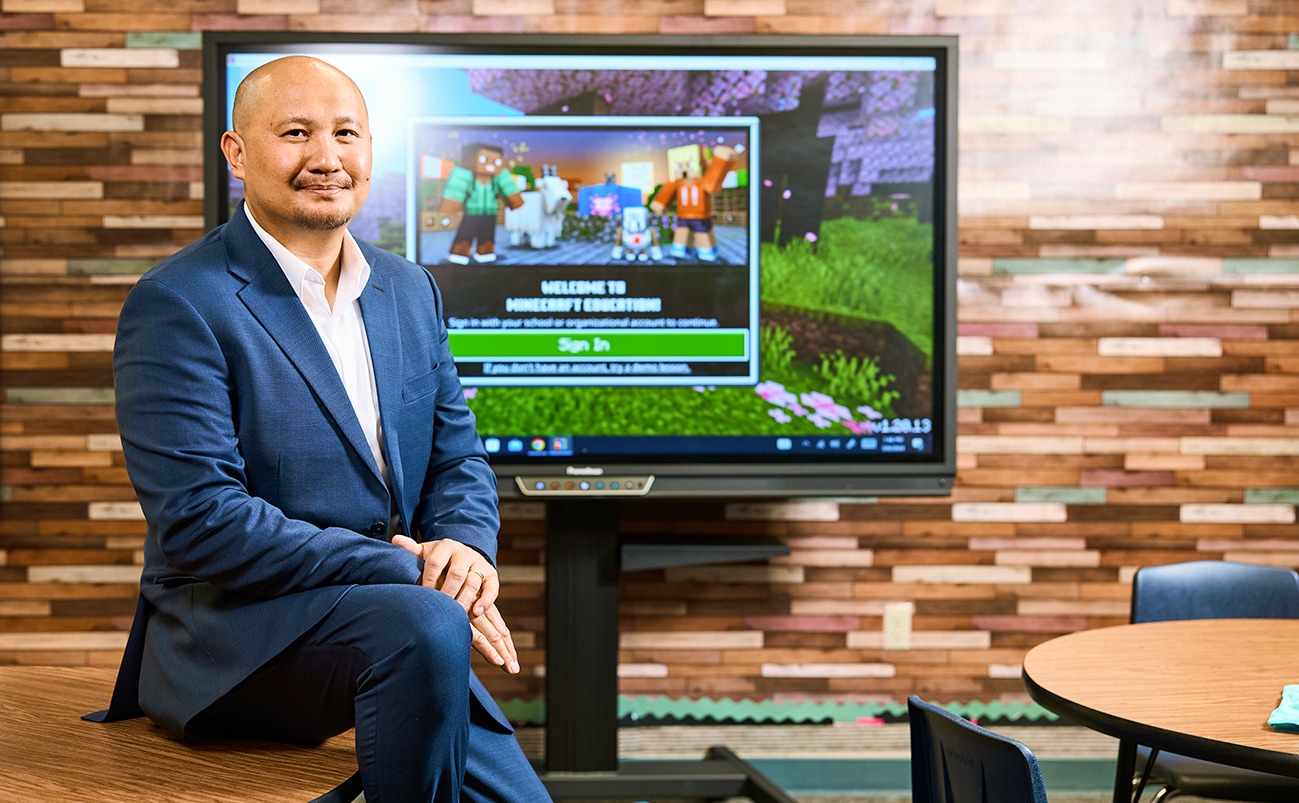
“CDW made sure we got everything we needed. Without CDW, I don’t think we would have met these super tight deadlines.”
— Don Soyinthisane, Executive Director of IT, Fresno Unified School District
Outsourcing Project Management and Installation Is Key to Success
When Soyinthisane bought the technology from CDW, he also hired the company to manage the project. CDW, in turn, brought in a third-party installer to deploy the technology over 14 months.
Soyinthisane credits CDW for a successful implementation. He had planned to manage the project himself until Miller talked him out of it. The deployment was too big, with too many school sites and too many people involved — from the vendor and installer to district personnel, including principals and facilities staff. Soyinthisane admits, “I didn’t have the skill set or the time to do it myself.”
Because the project was so big, the installer leased a warehouse to store the displays. There, staff configured the devices with software, asset-tagged them for the district and mounted them on the carts.
“CDW made sure we got everything we needed,” Soyinthisane says. “Without CDW, I don’t think we would have met these super tight deadlines.”
Fresno Unified Teachers Redesign Classrooms for Flexibility
Overall, the new digital whiteboards are making a huge impact on education in the district and have allowed teachers to reinvent their classrooms, Soyinthisane says.
During installation, district leaders asked the installer to strategically place the whiteboards on mobile stands in the middle of each classroom.
“We purposefully put the interactive displays in the middle so teachers would know they were mobile and easy to move,” Soyinthisane says. “Otherwise, if we put them in front, teachers could assume they were supposed to be there, and they might have stayed there forever.”
The strategy worked, and some teachers redesigned their classroom layouts. Teachers also have wireless keyboards and mice, to further encourage them to roam around the classroom while teaching.
“The tool isn’t just a shiny TV in the classroom,” Soyinthisane says. “This is a teaching tool that enables high-quality instruction.”
Photography by Cody Pickens